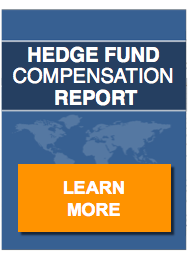Since the California Public Employees’ Retirement System (CalPERS) made the decision to redeem $4 billion of its assets from hedge fund investments in Q4 of 2014, no major hedge fund investor has made a similar public statement of similar intentions…until now.
During American International Group’s (AIG) fourth quarter earnings conference call on February 12, 2016, executive vice president and CFO Sid Sankaran calmly announced, “we are reallocating roughly 50% of our hedge fund portfolio, as Peter mentioned, primarily into investment grade bonds and commercial mortgage loans.”
How AIG’s Decision Differs from CalPERS’
The most obvious difference is the dollar impact of AIG’s decision. While CalPERS’ strategy resulted in $4 billion in redemptions, the AIG impact will be north of $5 billion. But the differences are not confined to just dollars. CalPERS’ announcement was decidedly less about hedge fund performance and more about hedge fund fees. To be sure, 2014 hedge fund performance in the aggregate was less than impressive, but the take-away from CalPERS’ decision was that hedge fund management and performance fees were largely to blame for the decision to exit and performance was a secondary source of frustration.
In the case of AIG, the decision to reallocate funds into investment grade bonds and commercial mortgage loans is a clear slap in the face to hedge fund performance.
Is This the Thin Edge of the Wedge?
While $5 billion is a lot of money, it isn’t flippant to define it as the thin edge. The hedge fund industry boasts around $3 trillion in assets under management (AUM). American International Group’s reallocation of $5.5 billion is a mere 0.0183 percent of total AUM, hardly a mortal wound. The real danger the industry faces is death by a thousand cuts. To ask it another way, is this indicative of a trend?
There Are Signs of Growing Investor Discontent
Prequin’s 2016 Global Hedge Fund Report is not without some disturbing statistics. Although hedge funds saw a net inflow of $71.5 billion in 2015, the gains occurred in the first half of the year, while the second half of 2015 saw net outflows of $4.8 billion. Prequin surveyed investors and learned that around one-third reported that returns did not meet expectations. More troubling is that an equal percentage had reduced confidence in hedge funds’ ability to meet the needs of their portfolio going forward. Not surprisingly, around one-third of the investors surveyed, plan to reduce the amount of capital they invest in hedge funds.
So What Does this All Mean?
Attracting institutional investors is going to be significantly more challenging in 2016 than it has been in prior years. Performance that may have previously been viewed as an anomaly is in danger of being viewed as a norm. The industry must face this reality and address the perception. Unfortunately, current market forces will make this a very difficult hill to climb, but climb it they must! Failure to achieve respectable gains in 2016 can only ramp up the level of discontent which increases the potential for the danger of the aforementioned “thousand cuts”.


